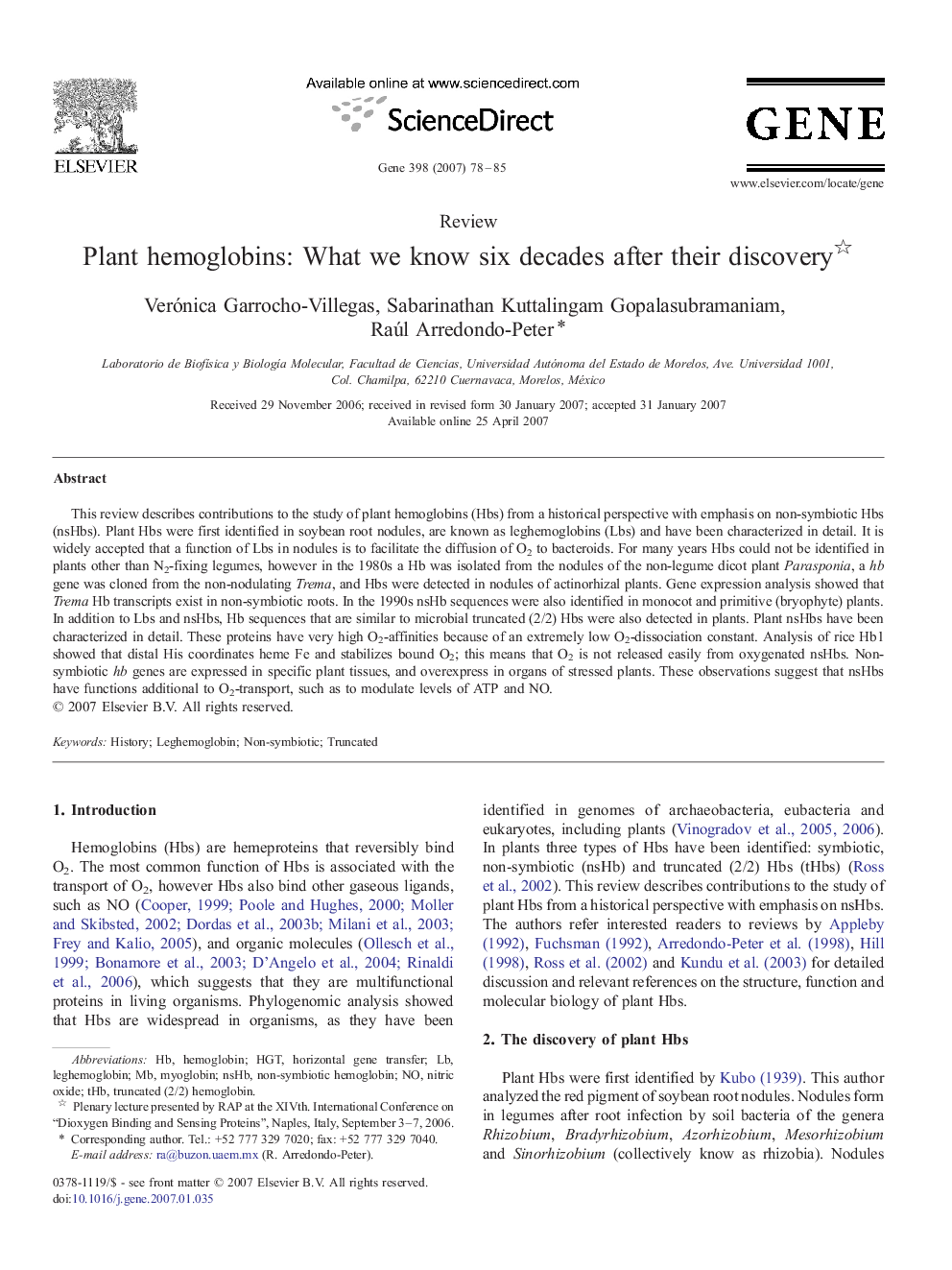| کد مقاله | کد نشریه | سال انتشار | مقاله انگلیسی | نسخه تمام متن |
|---|---|---|---|---|
| 2819643 | 1569931 | 2007 | 8 صفحه PDF | دانلود رایگان |

This review describes contributions to the study of plant hemoglobins (Hbs) from a historical perspective with emphasis on non-symbiotic Hbs (nsHbs). Plant Hbs were first identified in soybean root nodules, are known as leghemoglobins (Lbs) and have been characterized in detail. It is widely accepted that a function of Lbs in nodules is to facilitate the diffusion of O2 to bacteroids. For many years Hbs could not be identified in plants other than N2-fixing legumes, however in the 1980s a Hb was isolated from the nodules of the non-legume dicot plant Parasponia, a hb gene was cloned from the non-nodulating Trema, and Hbs were detected in nodules of actinorhizal plants. Gene expression analysis showed that Trema Hb transcripts exist in non-symbiotic roots. In the 1990s nsHb sequences were also identified in monocot and primitive (bryophyte) plants. In addition to Lbs and nsHbs, Hb sequences that are similar to microbial truncated (2/2) Hbs were also detected in plants. Plant nsHbs have been characterized in detail. These proteins have very high O2-affinities because of an extremely low O2-dissociation constant. Analysis of rice Hb1 showed that distal His coordinates heme Fe and stabilizes bound O2; this means that O2 is not released easily from oxygenated nsHbs. Non-symbiotic hb genes are expressed in specific plant tissues, and overexpress in organs of stressed plants. These observations suggest that nsHbs have functions additional to O2-transport, such as to modulate levels of ATP and NO.
Journal: Gene - Volume 398, Issues 1–2, 15 August 2007, Pages 78–85